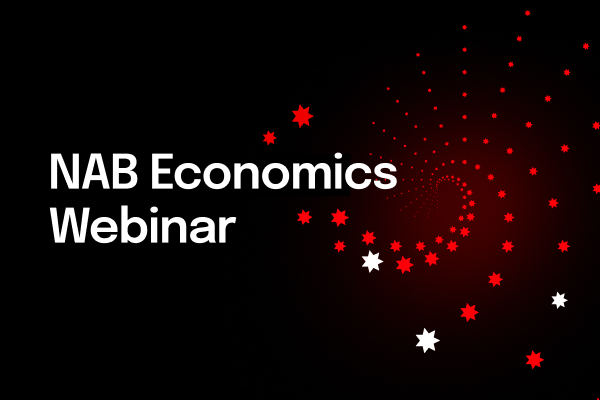Economic Update from NAB's Chief Economist, Sally Auld.


Webinar
The USD got off to a cracking start this week, gaining against all the majors, and taking EUR/USD below 1.06 for the first time since April.
The USD got off to a cracking start this week, gaining against all the majors, and taking EUR/USD below 1.06 for the first time since April. Some oil-supportive comments helped to steady commodity prices and proxy currencies later in the session. AUD bore the initial brunt of the USD move, but has recovered back to 0.72.
In what was expected to be a relatively quiet day, the USD suddenly gained fresh legs in the local session. Market chatter focused on a surprise Fed meeting on Monday night, but it was much ado about nothing. The meeting in question is a routine affair focusing on fortnightly recommendations made by the regional Fed banks about the discount rate. Count us sceptical that investors were, hand on heart, expecting a surprise FOMC rate hike. At best, that would have made a mockery of the Fed’s well-intentioned (though rather tortuous) communications strategy.
Nevertheless, the move quickly snowballed, nowhere as clearly as in AUD, which quickly surrendered the heights near 0.7250 that it took on Friday night. By mid-afternoon, AUD/USD was at 0.7160, and EUR/USD barely survived with a 1.06 handle (which it relinquished later).
A firmer USD saw commodity prices under the cudgel once again, with metals in particular focus. Copper traded below $4500, to its lowest level since May 2009. The London Metals Exchange Index and gold are both down 0.8% for the day, adding to their losses into the close last week. One might be tempted to ascribe this as the reason for AUD’s underperformance, but in truth, metals have provided a poor steer in recent weeks. Indeed, AUD’s bounce up to 0.62 early this morning comes despite metals prices wallowing near their session lows.
Instead, oil prices provided a surprise support, after Saudi Arabia issued a statement pledging to work with oil producers to stabilise oil prices. Similar comments have been made before, including within the last week. But the market chose to run with it, with Brent crude up 1.3% for the day. This is likely reflective of substantial short positioning in the oil market. The investors are looking toward OPEC’s 4 December meeting, but an agreement on curtailing production is not expected.
Data delivery contributed little to broader market moves. The euro-zone composite PMI rose to 54.4, beating expectations to hit its highest level since May 2011. The upside surprise was evenly spread across manufacturing and services. On the other hand, the US Markit PMI undershot expectations, printing at 52.6 in November, its lowest since October 2013. However, this simply brings the index closer in line with the more widely-followed ISM, which sits at 50.1.
Clearly, the rapid build-up in long USD positions in the past month (see the Chart of the Day) has the market vulnerable to sharp squeezes, especially with USD indices back near record highs. The DXY touched 100.0 overnight, but that proved a near-term cap. We remain modestly bullish on the USD, but selective on our instrument. For choice, we remain short NZD/USD from 0.6610.
RBA Governor Stevens’ speech today will be the highlight over our session, notwithstanding another blue-sky spill in risk assets. On the topic “The Long Run”, our economics colleagues suggest Stevens will cover themes such as productivity, the sustainability of growth, and the limits of monetary policy. These will be familiar refrains, and unlikely to ruffle too many feathers on the day. There is a Q&A session, with media in attendance, which will likely garner comments more relevant to near-term policy.
On the data front, Markit release its preliminary Japan PMI for November, and Germany’s IFO survey is due. Perhaps the most attention will be paid to the second reading of US Q3 GDP. Consensus expects an upward revision to 2.1% q/q annualised, from 1.5%, as the drag on growth from inventories was likely overestimated in the first reading. A modest surprise on either side is unlikely to stay or hasten the Fed’s hand, but in a relatively flighty market, could provide some volatility.
The Conference Board consumer confidence and Richmond Fed manufacturing indices round out the overnight calendar.
On global stock markets, the S&P 500 was +0.10%. Bond markets saw US 10-years -1.76bp to 2.24%. On commodity markets, Brent crude oil +0.72% to $44.98, gold-0.9% to $1,067, iron ore -0.4% to $44.75. AUD is at 0.7194 and the range was 0.7159 to 0.725.
For full analysis, download report
For further FX, Interest rate and Commodities information visit nab.com.au/nabfinancialmarkets
© National Australia Bank Limited. ABN 12 004 044 937 AFSL and Australian Credit Licence 230686.